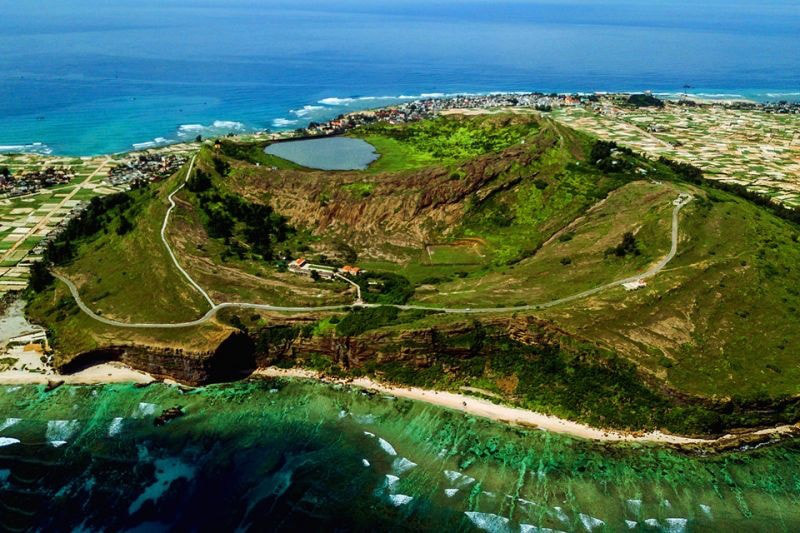The Department of Agriculture and Rural Development of Quang Ngai Province in central Vietnam has proposed the repair and renovation of the reservoir located in the extinct Thoi Loi volcano crater to shift its use from agricultural production to providing domestic water for all residents of Ly Son Island.
In a proposal submitted on Friday, the department recommended that local agricultural production transition to a rainwater collection system to accommodate this change.
Ly Son Island, covering approximately 10 square kilometers with around 300 hectares of agricultural land, is home to over 22,000 people.
The island has been grappling with ongoing water scarcity, a problem worsened by rising salinity levels, according to monitoring stations.
Currently, the island's primary water source is more than 2,100 wells.
The Thoi Loi reservoir, built in 2012 within the crater of the extinct volcano, has a capacity of 270,000 cubic meters and is primarily used for agricultural purposes.
Local authorities have proposed upgrading the reservoir to increase its capacity for domestic water supply.
However, the Department of Agriculture and Rural Development concluded that this approach was not feasible, as the reservoir’s capacity would not significantly increase after the upgrade.
|
|
| People paraglide over the reservoir in the Thoi Loi volcano crater on Ly Son Island off the coast of Quang Ngai Province in central Vietnam. Photo: T.M. / Tuoi Tre |
Instead, the department suggests renovating the reservoir to store fresh water exclusively for domestic use, discontinuing its role in agricultural production.
To meet agricultural water needs, the department proposes investing in a rainwater collection system and constructing a separate reservoir.
If approved, these plans would be implemented between 2025 and 2030.
Tran Phuoc Hien, deputy chairman of the People’s Committee of Quang Ngai Province, has instructed the provincial Department of Agriculture and Rural Development to collaborate with the Ly Son administration and other relevant agencies to refine and further develop the plan.
Hien stressed that the plan must match the broader adjustments to the general planning of the nearby Dung Quat Economic Zone on the mainland and the central government-approved urban construction plans for Ly Son.
The project must ensure long-term effectiveness as well.
Like us on Facebook or follow us on Twitter to get the latest news about Vietnam!






















































